A bit 'o Background
Ever since I got to visit a "Riding Railway" somewhere in Western, MA (US), I've always wanted to have a backyard railway that:
- I could ride
- Had some sort of purpose (moving firewood, rocks, etc)
I've been interested in trains my whole life, but had better skills with computers and software, than operating, or working around large equipment.
Fast forward about 20 years, to 2019, with a New England winter just about to start. We, like a lot of other New England houses heat with wood pellets, the main problem being the pallet with the pellets is at the base of the driveway, with a roughly 20' rise to get to the mudroom. (Roughly where the Pellet stove resides). I had just left a job as a software engineer at a telecommunications company, and needed a project to keep me busy as I looked for a new job. I'm still not sure what sparked the idea, but I decided that I would build a ramp, with rails, and a cart that would pull the 40lb (~18kg) bags of wood pellets up for me.
After a bit of land surveying, the initial plan was deemed unfeasible, as the ground was too uneven and would require significant dirt/rock moving (which is a bit difficult when the ground is frozen!). A modified plan was developed, with the "track/ramp" coming into the reverse side of the mudroom. The terrain here was mostly flat, with a 90deg bend, a second slight bend, and a hill at the end.
Ok, so how to make this all work? I didn't exactly have time to wait for 1" aluminum rail to arrive from RMI Railworks (https://www.rmirailworks.com/), winter was rapidly approaching here, and snowfall could happen any day. I had initially looked at using aluminum C channel rail to somehow make the track, but quickly ran into the problem of "Now how do I make a turn?". After a bit of thought, I stumbled upon PVC trim boards. The 1"x2" (actual 1.5"x.75") boards had some flex to them and were about the right size for a rail for a garden railway.
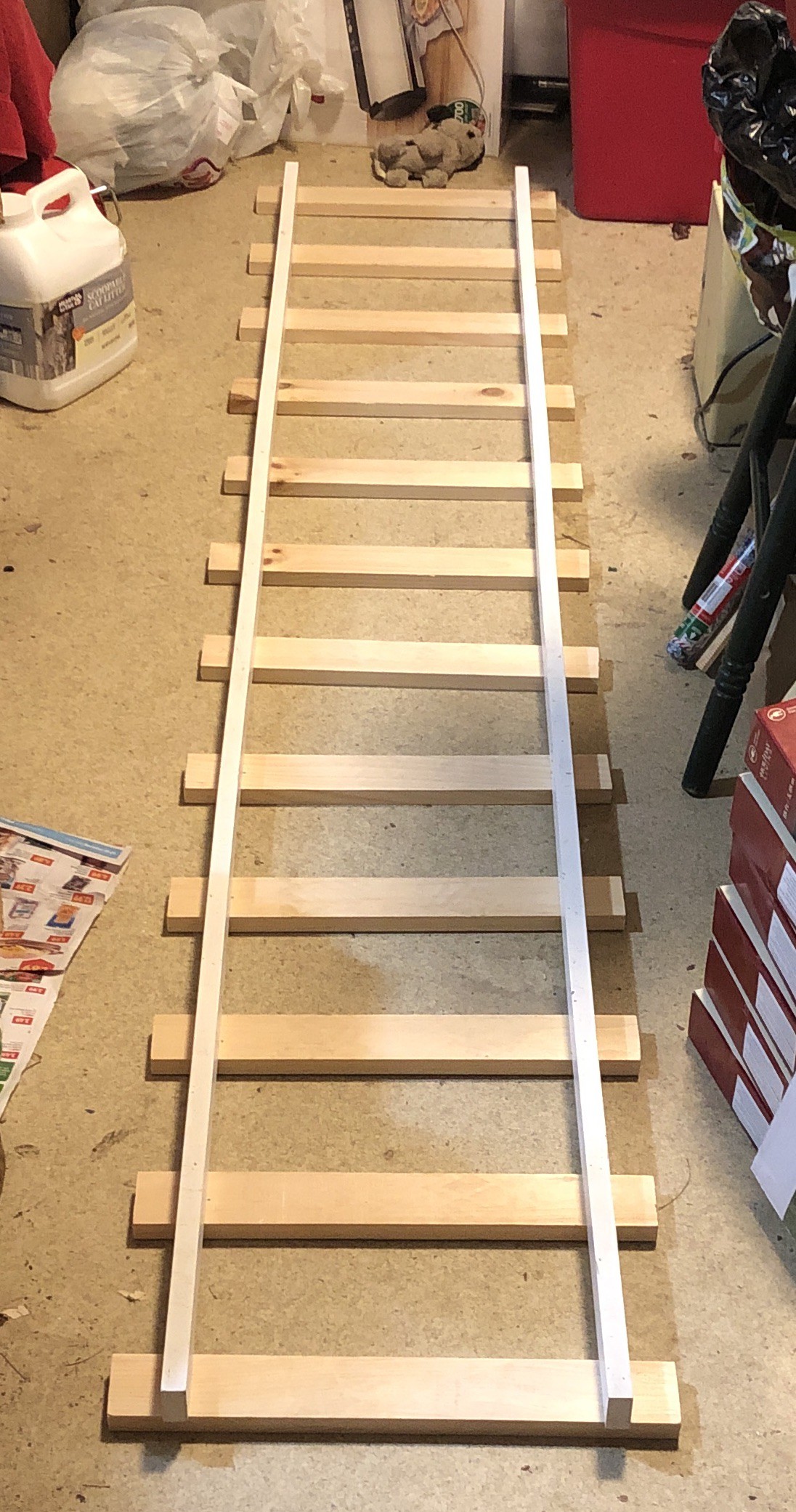
After a bit of "careful" tie screwing (seriously, the track is pretty bad at this point, I hadn't made any tools to help with construction), I had my first 8 foot section of track.
Ok, so tracks are nice and all, but don't do a lot of good without something that can roll on them. So time to build a cart...
First issue I ran into was the wheels. I wanted a roughly 0.75 inch wide single flanged wheel, but looking at the cast iron ones online, a single bogey would be over $200! So, now what? I looked at bicycle wheels, pulley wheels, until I realized that I could try 3D printing them. They wouldn't be too strong, but I only need to pull 1-2 bags of pellets at a time, plus frame/bogey weight. After all this is an experimental side project.
- Insert CAD montage footage here...
I don't have a lot of pictures at this point of building the wheels. From what I do remember, I worked something up in Trimble Sketchup, and tried printing it, with mostly the default settings in Simplify3D on a Monoprice Select Mini v2. It ended taking probably about a few days to print the wheels, with several revisions of wheel during that time. Eventually I had 4 wheels.
I later picked up some 1/2 aluminum rod from Home Depot, as well as some 1/2 x 1 3/8 inch bearings while there. Eventually after some time in the workshop, I had the basis for a cart.
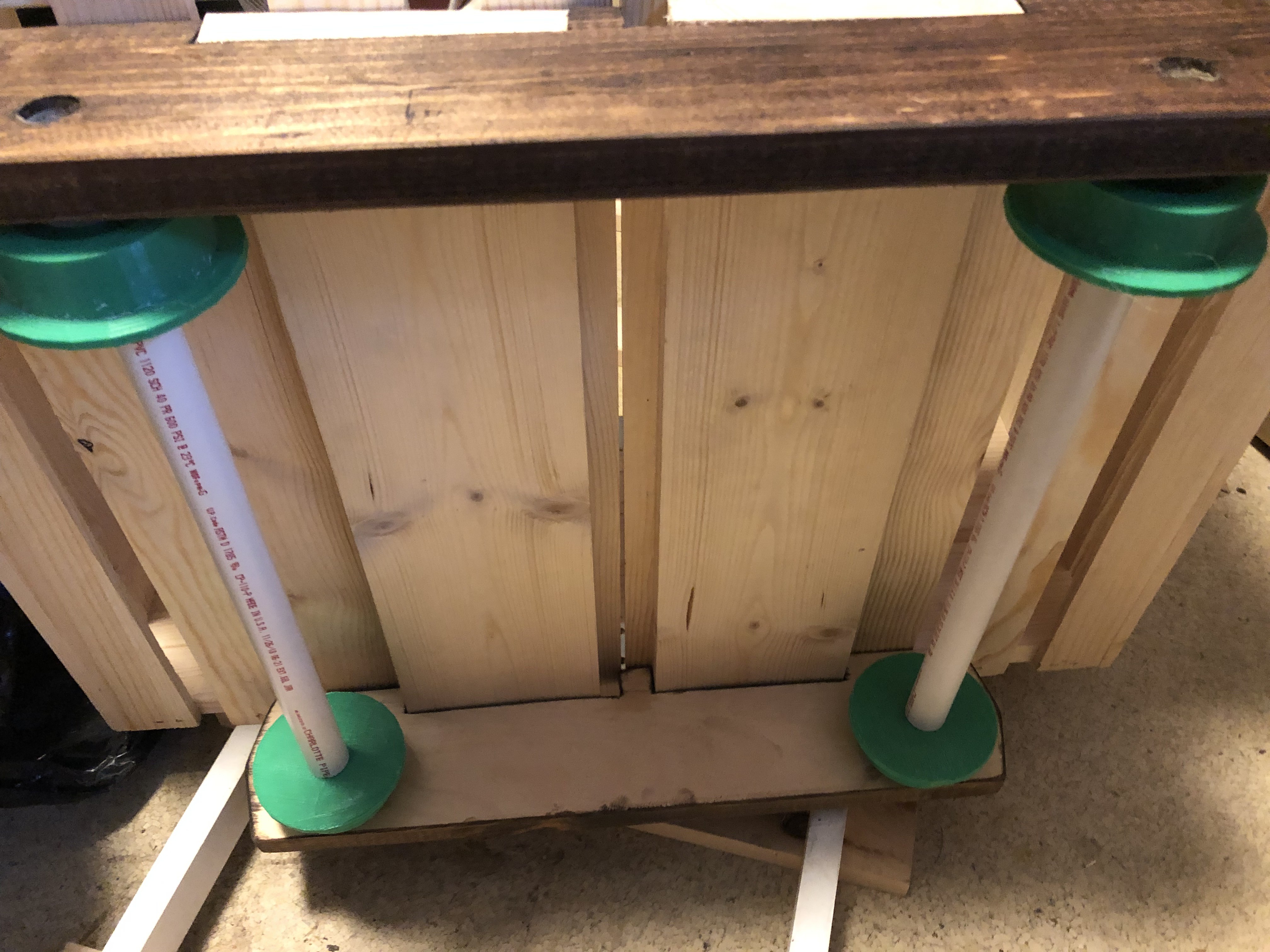
1/2 inch PVC pipe is used to keep the wheels spaced out for the 13 inch gauge track.
It didn't take long until I decided to replace the crate that formed the "upper frame", with a better deck, so that I could add coupling hooks and bumpers. (It also didn't take long for the cat to find it :) )
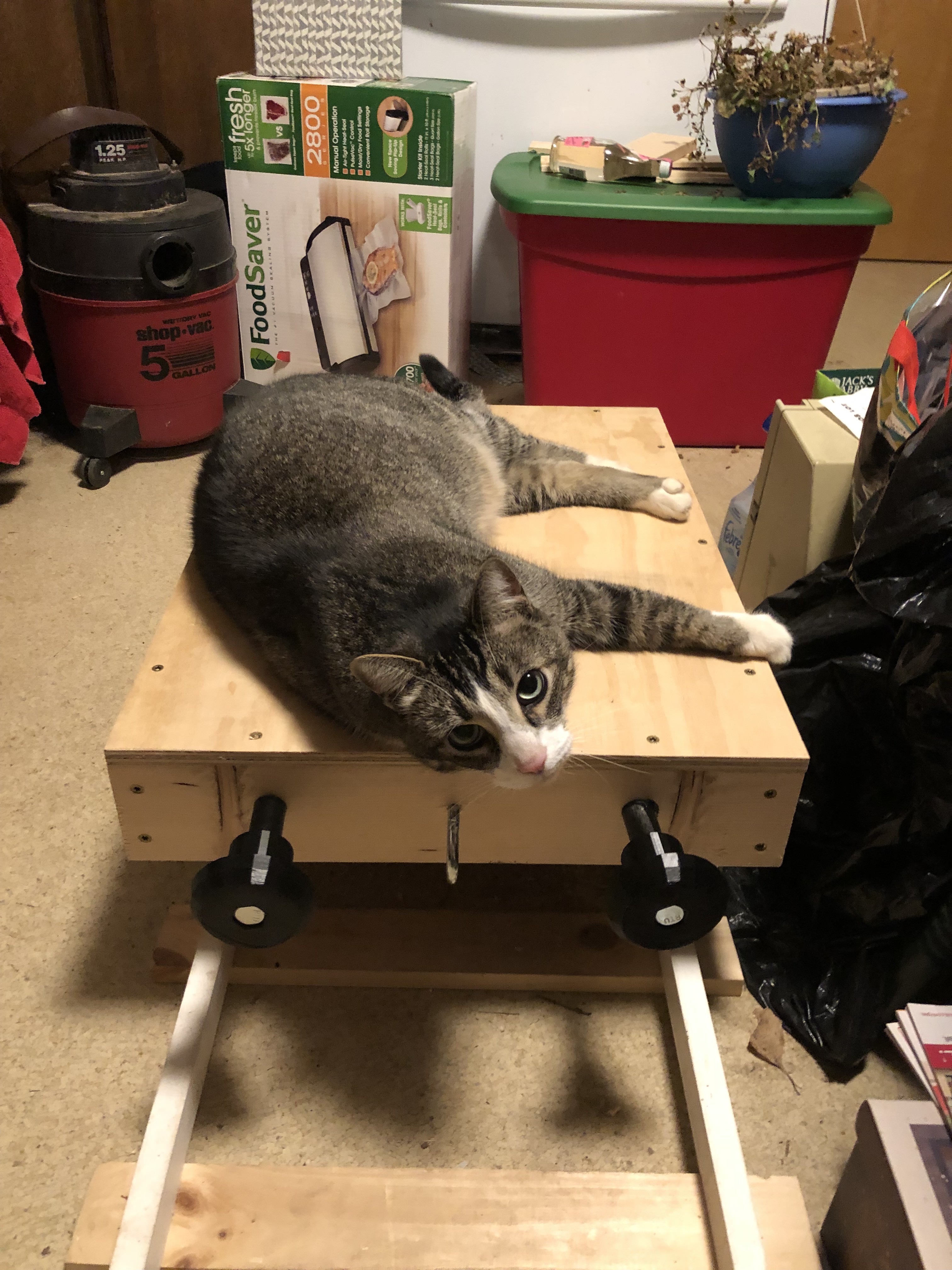
Coupling currently is done by means of hook-and-chain, with 3D printed bumpers, to keep the carts spaced out reasonably well.
The next step was to test and see how it did with a load. 2 8x8x16 inch cinderblocks were used as weight. With a rope tied onto the coupling hook, the cart actually moved down the single 8 foot piece of track! (Squeaked horribly though. Oh and for anyone wondering about the name, we live near the Quabbin Reservoir, in the Woods, hence "Quabbinwood")
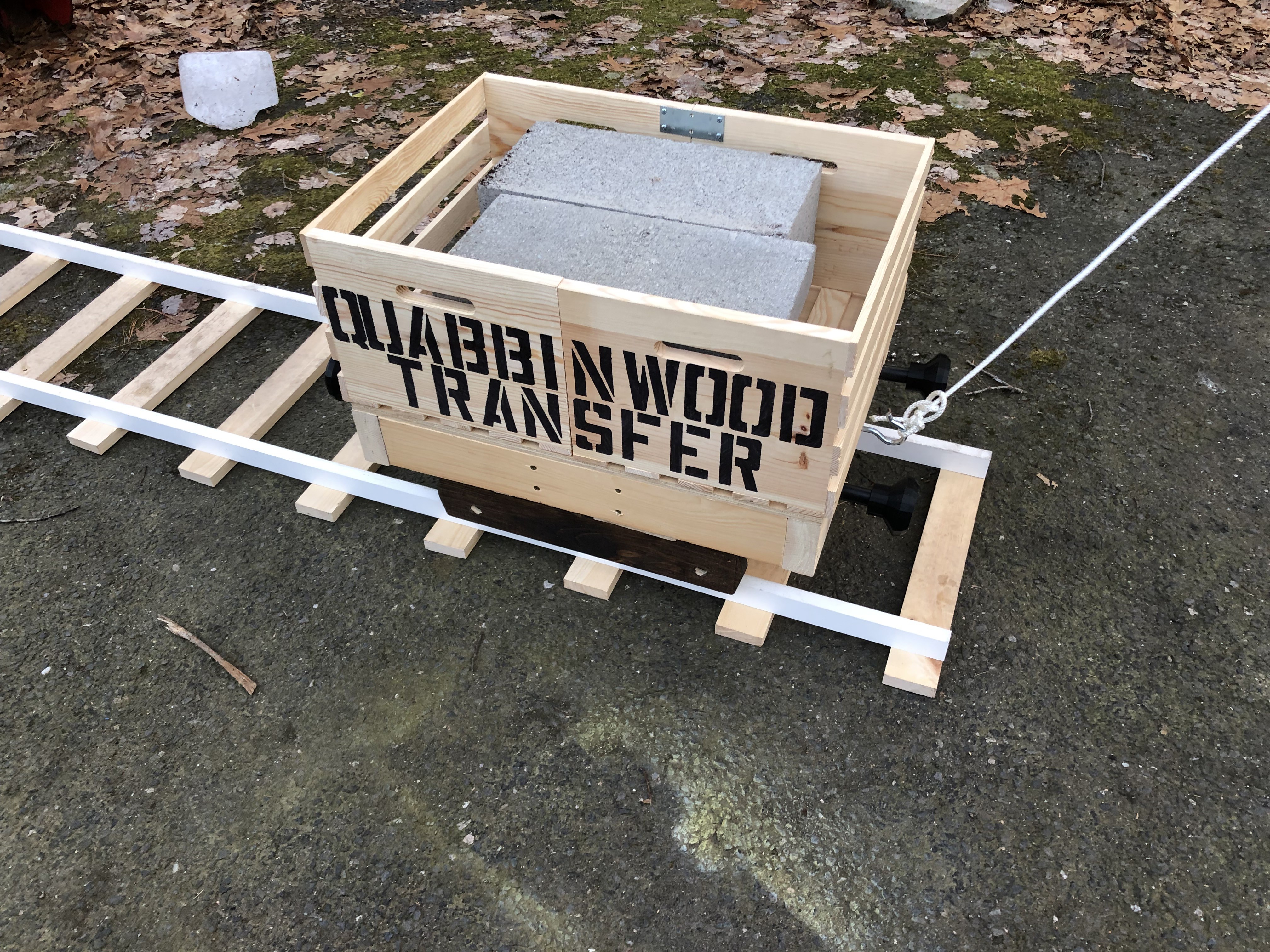
Quickly after pulling the cart down the single 8 foot stretch, I noticed that the track was horribly crooked, and would bind at several points. Ok, so now to rebuild that...
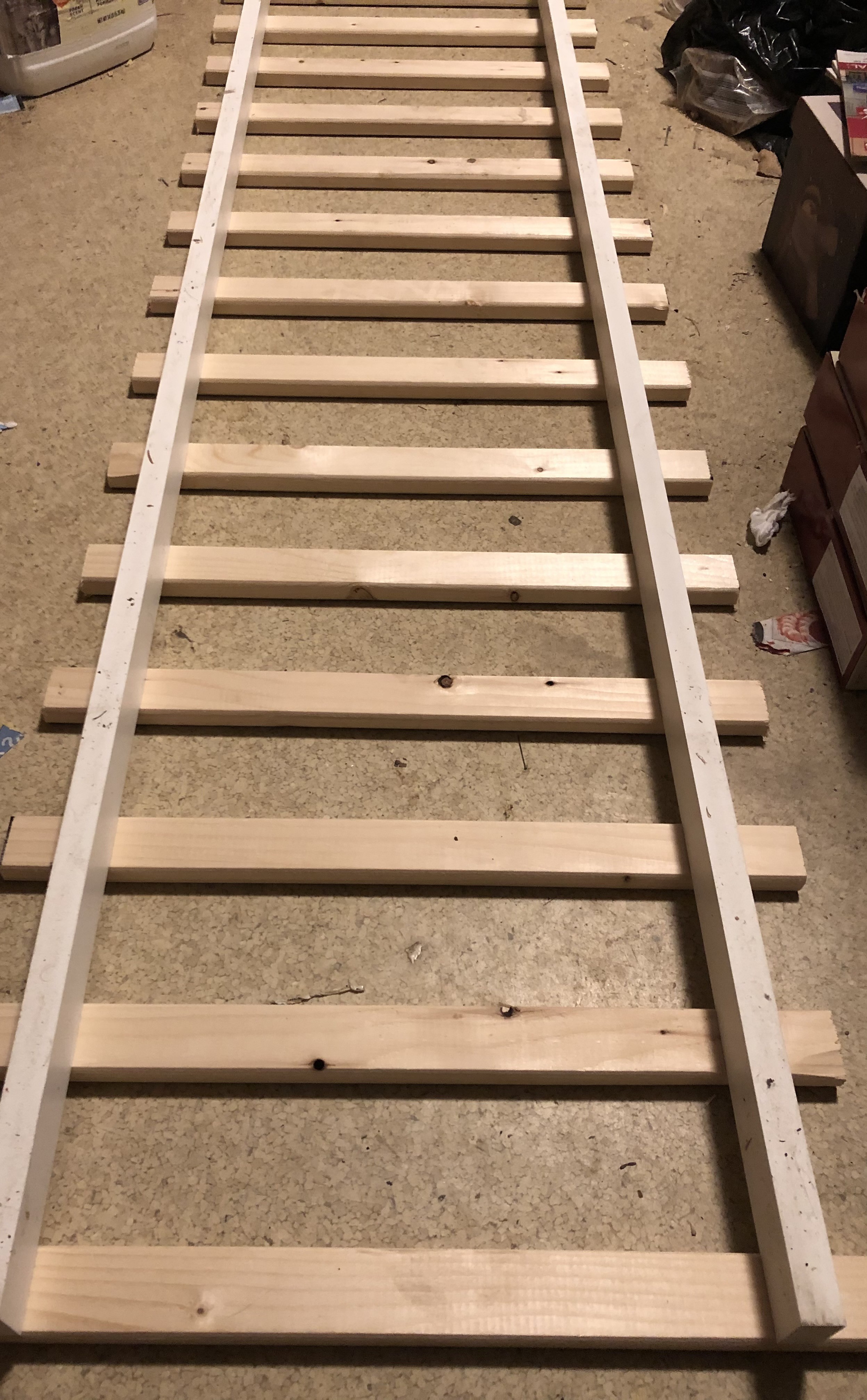
Some 1x2" strips of pine, were used for the new ties, with more consistent spacing between them and more importantly, a constant 13" width between rails. I ended up cutting a board to make a jig to help with this.

"Mending plates" were chosen to act as rail joiners.

Stack of pine strip boards, ready to be cut up into ties.
I'm hoping to get around to publishing the next part of this shortly (need some sleep first), where I actually build the track and begin work on a second cart.
Discussions
Become a Hackaday.io Member
Create an account to leave a comment. Already have an account? Log In.
Pretty cool. I can’t wait to see how it works and handles snow. If you end up making lots of bogies, you may want to cast them out of a hard polymer. Just 3D print the mold. Or aluminum cast them at a nearby makerspace for fun.
Are you sure? yes | no